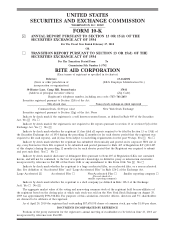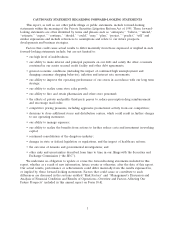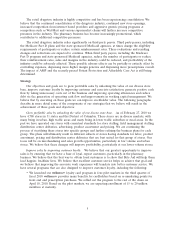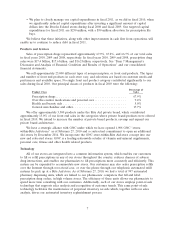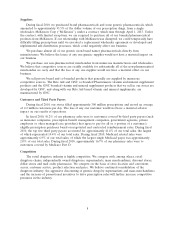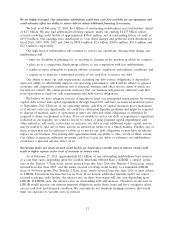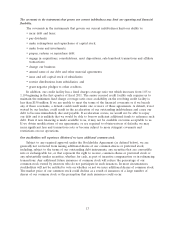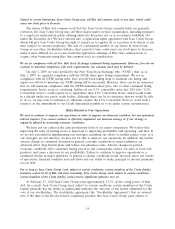Rite Aid 2010 Annual Report Download - page 5
Download and view the complete annual report
Please find page 5 of the 2010 Rite Aid annual report below. You can navigate through the pages in the report by either clicking on the pages listed below, or by using the keyword search tool below to find specific information within the annual report.The retail drugstore industry is highly competitive and has been experiencing consolidation. We
believe that the continued consolidation of the drugstore industry, continued new store openings,
increased competition from internet based providers and aggressive generic pricing programs at
competitors such as Wal-Mart and various supermarket chains will further increase competitive
pressures in the industry. The pharmacy business has become increasingly promotional, which
contributes to additional competitive pressures.
The retail drugstore industry relies significantly on third party payors. Third party payors, including
the Medicare Part D plans and the state sponsored Medicaid agencies, at times change the eligibility
requirements of participants or reduce certain reimbursement rates. These evaluations and resulting
changes and reductions are expected to continue. When third party payors, including the Medicare
Part D program and state sponsored Medicaid agencies, reduce the number of participants or reduce
their reimbursement rates, sales and margins in the industry could be reduced, and profitability of the
industry could be adversely affected. These possible adverse effects can be partially or entirely offset by
controlling expenses, dispensing more higher margin generics and dispensing more prescriptions overall.
The impact of AMP and the recently passed Patient Protection and Affordable Care Act is still being
determined.
Strategy
Our objectives and goals are to grow profitable sales by unlocking the value of our diverse store
base, improve customer loyalty by improving customer and associate satisfaction, generate positive cash
flow by taking unnecessary costs out of the business and improving operating efficiencies and reduce
debt via the generation of operating cash flow and improvements in working capital management. We
believe that by executing on these goals we can improve stockholder value. The following paragraphs
describe in more detail some of the components of our strategies that we believe will result in the
achievement of these goals and objectives:
Grow profitable sales by unlocking the value of our diverse store base. As of February 27, 2010 we
have 4,780 stores in 31 states and the District of Columbia. These stores are in diverse markets, with
many being in urban, high traffic areas and many being in lower traffic suburban or rural areas. In the
past we have operated our stores with consistent standards for store staffing, field management staffing,
distribution center deliveries, advertising, product assortment and pricing. We are continuing the
process of stratifying these stores into specific groups and further refining the business plans for each
group. The plans will ultimately result in different subsets of stores having standards for labor, product
assortment, pricing and distribution center deliveries that are best suited for that group of stores. Our
focus will be on merchandising and sales growth opportunities, particularly in low volume and urban
stores. We believe that these changes will improve profitability, particularly at our lower volume stores.
Improve sales by improving customer loyalty. We believe that our greatest opportunity to improve
sales is by ensuring that we have a base of loyal, repeat customers, particularly in the pharmacy
business. We believe that the best way to obtain loyal customers is to show that Rite Aid will help them
lead happier, healthier lives. We believe that excellent customer service helps us achieve that goal and
we believe that improving the associate work experience will translate into better customer service. We
have several programs that are also designed to improve customer loyalty, including the following:
• We launched our wellness+ loyalty card program in four pilot markets in the third quarter of
fiscal 2010. wellness+ provides many benefits for cardholders based on accumulating points for
front end and prescription purchases. We rolled out the program to the rest of the chain on
April 18, 2010. Based on the pilot markets, we are expecting enrollment of 15 to 20 million
members at maturity.
5

